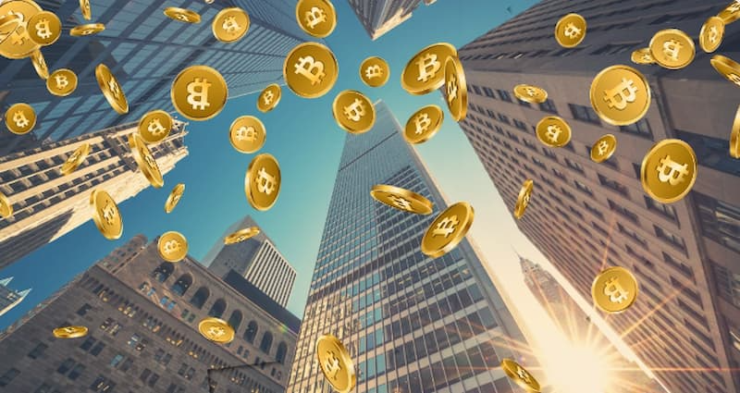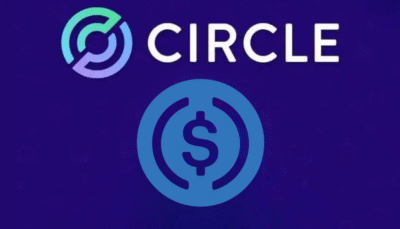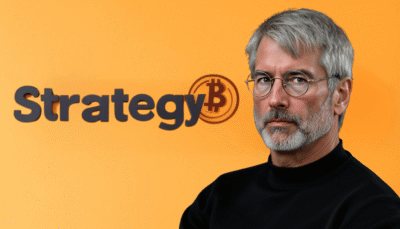The crypto market is known for its extreme volatility, where emotions often dictate trading decisions. Retail traders tend to buy assets when they are pumping and sell when fear takes over, while institutional investors follow a completely different approach.
According to Matthias, an expert from the CoinRock Show, the key to winning in this market is simple, buy when everyone else is scared and sell when the market is euphoric.
Fear Creates the Best Buying Opportunities
Every market cycle experiences phases of extreme fear and extreme greed. When prices are surging, social media and mainstream news fuel hype, encouraging retail traders to jump in at inflated prices. Conversely, when the market crashes, fear dominates, and most traders panic-sell, locking in losses. Historical data proves that the best buying opportunities occur when sentiment is at its lowest.
For example, during the March 2020 COVID crash, Bitcoin dropped below $4,000, causing widespread panic. Many traders exited the market, convinced that the downturn would continue. However, those who bought during the crash saw Bitcoin soar to $69,000 in just over a year. The same pattern repeated in 2022, when Bitcoin fell below $16,000, only to recover and rally past $60,000 in 2024.
Matthias highlights how this cycle repeats every time:
“Fear blinds people from seeing opportunity. The best trades happen when everyone else is running for the exit.” — Matthias
Why Chasing Hype Leads to Losses
Retail traders often fall victim to FOMO (fear of missing out). When an asset is skyrocketing, it feels safe to buy because everyone is talking about it. However, this is usually when smart money is already taking profits, leaving retail traders as the exit liquidity.
A perfect example is Dogecoin’s 2021 rally, when it surged over 10,000%, fueled by Elon Musk’s tweets and widespread social media hype. At its peak in May 2021, Dogecoin hit $0.73, only to collapse by more than 80% in the following months, falling to $0.13 by early 2022. On-chain data from Santiment revealed that whale addresses dumped billions of DOGE right before the crash, while retail traders were still buying at the top.
The same pattern was seen with meme coins like Shiba Inu (SHIB) and Pepe (PEPE). Shiba Inu surged 1,200% in just one month in late 2021, only to plummet over 90% by mid-2022. On-chain analysis from IntoTheBlock showed that large SHIB holders significantly reduced their positions as the price spiked, signaling that whales were offloading their tokens onto retail buyers. Similarly, Pepe saw a massive pump in 2023, gaining 500% in two weeks, only to see a sharp crash as insiders and early investors took profits.
NFTs followed the same pattern. In 2021, collections like Bored Ape Yacht Club (BAYC) and Azuki soared to record highs, with some NFTs selling for over $500,000. However, by 2023, floor prices for many hyped NFTs had crashed by more than 90%, leaving retail investors with illiquid assets that no longer had the same demand.
Matthias explains how this cycle repeats every time:
“If you’re buying because something is trending on Twitter, you’re probably the exit liquidity for someone smarter.” — Matthias
Market cycles have proven that by the time an asset is making headlines, it’s often too late to enter. Smart investors accumulate before the hype, while retail traders rush in when the price is already overextended. This is why institutions make money while most retail traders end up losing.

Institutions Buy When No One Is Watching
While retail traders sell in fear, institutions and professional investors accumulate. On-chain data from Glassnode shows that whale wallets increased their Bitcoin holdings significantly during the 2022 crash, while smaller wallets were panic-selling. CoinShares’ Digital Asset Fund Flows also confirmed that institutional investment spikes when prices are low, proving that big money sees downturns as opportunities.
This is exactly why long-term investors outperform short-term traders. They are not swayed by headlines or temporary market dips. Instead, they follow data and fundamentals, ensuring they buy assets when they are undervalued rather than overhyped.
Matthias emphasizes that true winners in crypto are those who learn to control their emotions and follow smart money strategies.
“The market rewards patience and punishes emotion. The sooner you learn this, the sooner you’ll start making real money.” — Matthias
Adopt the Smart Investor Mindset
Winning in crypto isn’t about following trends—it’s about understanding market cycles and positioning yourself before the crowd. Fear creates the best buying opportunities, and hype often signals the worst time to enter. The next time the market crashes and everyone is panicking, ask yourself: Are you going to repeat the mistakes of retail traders, or will you buy when fear is at its peak?
The choice between chasing hype or buying fear determines whether you succeed in crypto or end up another statistic of traders who bought high and sold low.





